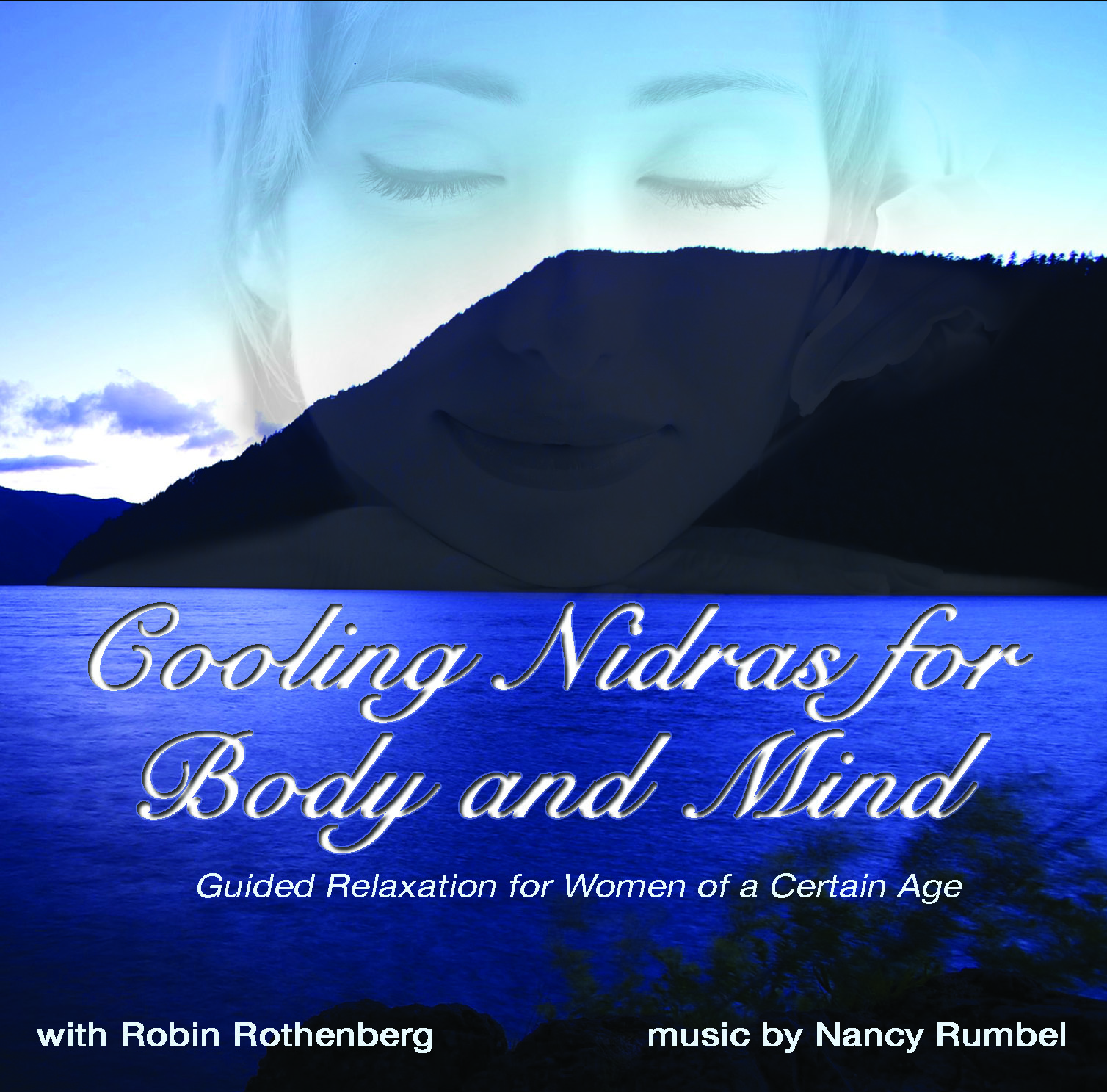Evocative imagery of rivers and gentle breezes induce a state of calm, as Robin guides you to dial-down your inner thermostat.
Nancy’s melodies create the perfect backdrop to take you deep within until you find yourself once again at home in your body.
Guided Meditation
Yoga Nidra is a guided meditation that progressively releases tension in the body and mind. It has been proven effective at addressing anxiety, chronic pain and sleep disorders.
These two nidras were specifically created for a NIH (National Institutes of Health) funded study aimed at managing hot flashes in menopausal women.
CD: $18.95, Digital: $12.95
Featuring the music of Nancy Rumbel
Nancy Rumbel is a Grammy award-winning composer and recording artist based in Issaquah, WA. Her comforting music has been used in various ways to support contemplative and therapeutic practices.
Includes
Two 20 minute nidras: 1. River Nidra 2. Meadow Nidra
Recommended use: before bed to support sleep.
“Soothing the Spirit has brought me more quickly and effortlessly to a state I like to call coming home to my true self. Robin”s voice resonates with the calm place in me. Nancy Rumbel’s music is genius. It sets my intention of acting and not reacting to whatever the day brings.”
Product Review
Amy Weintraub, LifeForce Yoga Healing Institute
Senior Yoga Therapist and teacher trainer, Robin Rothenberg teams up with award-winning composer Nancy Rumbel for a second CD of Yoga Nidra practices. Cooling Nidras was created for a National Institutes of Health (NIH) funded study that looked at the efficacy of using Yoga Nidra, along with yoga asana, for menopausal women suffering from hot flashes. Although hot flashes were not significantly reduced in a population that had more than 28 hot flashes a day, yoga and yoga nidra did show a significant improvement in quality of life factors including sleep and sexuality (libido) as compared to cardio exercise and usual care. Rothenberg says that when she tested out the protocol (She ran three free trials), the overall feedback was that women were sleeping much better and less bothered by hot flashes and felt more in control of their “thermostat.”
There are two 20-minute soothing, cooling practices. In addition to the traditional body scan, breath awareness, and moments of expanded consciousness, the first practice makes use of cool stream and river imagery and a left nostril breathing practice that is cooling and releasing. In the second Nidra practice, Rothenberg’s language is even more beautifully evocative. The practitioner is guided to imagine a cool breeze brushing or fanning across each body party, a shady grove, and being cradled by moist earth. She suggests that the practitioner imagine an inner thermostat, and then guides the raising and lowering, by degree, of the body temperature. Although the shortened protocol, necessitated by the study’s parameters means that Rothenberg did not include the exploration of the opposites of emotion and belief (manomaya kosha and vijnayamaya kosha), I can imagine using this CD, not only for managing hot flashes during menopause, but any time a moment of cool rest would be appreciated. Rumbel’s music gracefully compliments Rothenberg’s words.
I would imagine that once the practitioner is comfortable with the imagery of cool breezes and turning down her thermostat, she may get some relief at the onset of a flashback. However, the practice seems best suited to basic relaxation that can help with sleep, whether we are menopausal or not.





